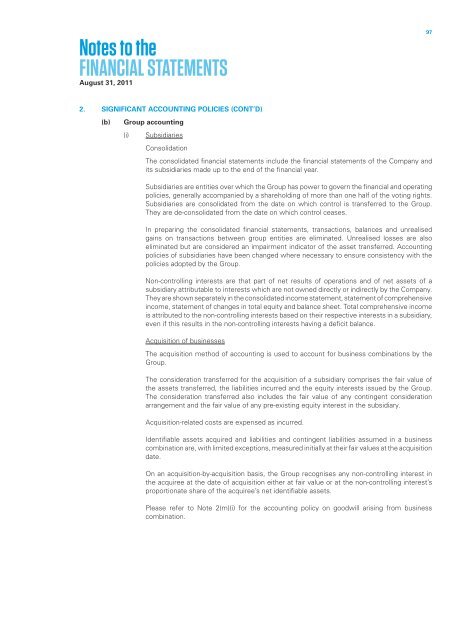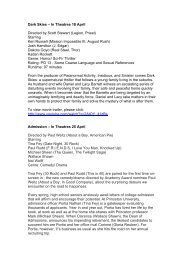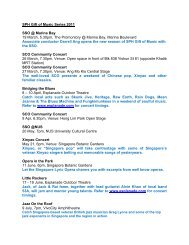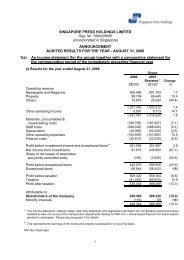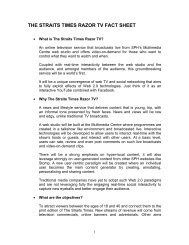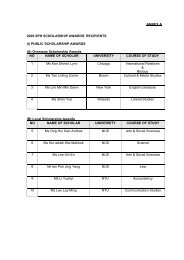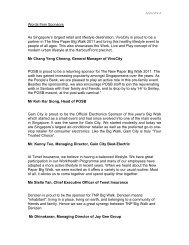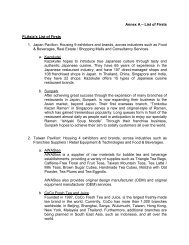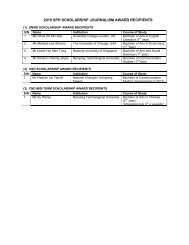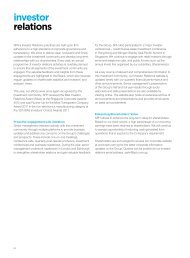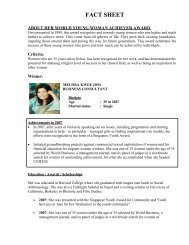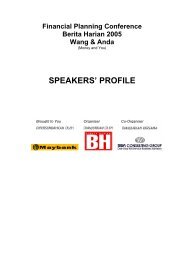Singapore Press Holdings annual report 2011 Singapore Press ...
Singapore Press Holdings annual report 2011 Singapore Press ...
Singapore Press Holdings annual report 2011 Singapore Press ...
Create successful ePaper yourself
Turn your PDF publications into a flip-book with our unique Google optimized e-Paper software.
Notes to the<br />
Financial StatementS<br />
August 31, <strong>2011</strong><br />
97<br />
2. SIGNIFICANT ACCOUNTING POLICIES (CONT’D)<br />
(b)<br />
Group accounting<br />
(i)<br />
Subsidiaries<br />
Consolidation<br />
The consolidated financial statements include the financial statements of the Company and<br />
its subsidiaries made up to the end of the financial year.<br />
Subsidiaries are entities over which the Group has power to govern the financial and operating<br />
policies, generally accompanied by a shareholding of more than one half of the voting rights.<br />
Subsidiaries are consolidated from the date on which control is transferred to the Group.<br />
They are de-consolidated from the date on which control ceases.<br />
In preparing the consolidated financial statements, transactions, balances and unrealised<br />
gains on transactions between group entities are eliminated. Unrealised losses are also<br />
eliminated but are considered an impairment indicator of the asset transferred. Accounting<br />
policies of subsidiaries have been changed where necessary to ensure consistency with the<br />
policies adopted by the Group.<br />
Non-controlling interests are that part of net results of operations and of net assets of a<br />
subsidiary attributable to interests which are not owned directly or indirectly by the Company.<br />
They are shown separately in the consolidated income statement, statement of comprehensive<br />
income, statement of changes in total equity and balance sheet. Total comprehensive income<br />
is attributed to the non-controlling interests based on their respective interests in a subsidiary,<br />
even if this results in the non-controlling interests having a deficit balance.<br />
Acquisition of businesses<br />
The acquisition method of accounting is used to account for business combinations by the<br />
Group.<br />
The consideration transferred for the acquisition of a subsidiary comprises the fair value of<br />
the assets transferred, the liabilities incurred and the equity interests issued by the Group.<br />
The consideration transferred also includes the fair value of any contingent consideration<br />
arrangement and the fair value of any pre-existing equity interest in the subsidiary.<br />
Acquisition-related costs are expensed as incurred.<br />
Identifiable assets acquired and liabilities and contingent liabilities assumed in a business<br />
combination are, with limited exceptions, measured initially at their fair values at the acquisition<br />
date.<br />
On an acquisition-by-acquisition basis, the Group recognises any non-controlling interest in<br />
the acquiree at the date of acquisition either at fair value or at the non-controlling interest’s<br />
proportionate share of the acquiree’s net identifiable assets.<br />
Please refer to Note 2(m)(i) for the accounting policy on goodwill arising from business<br />
combination.


